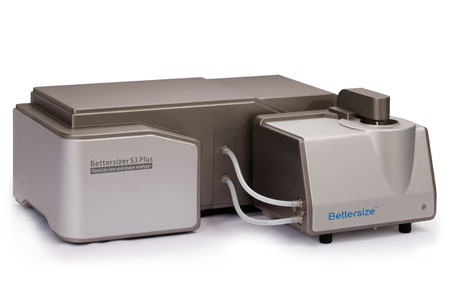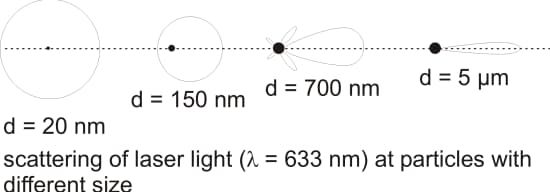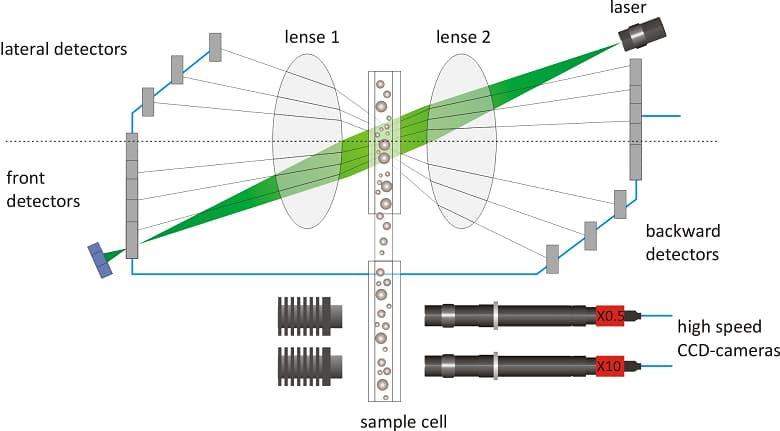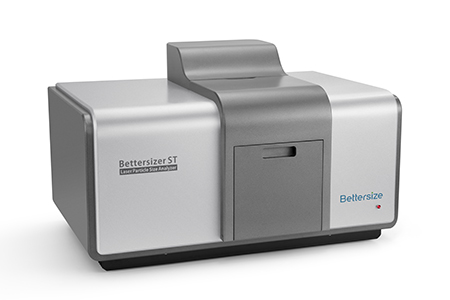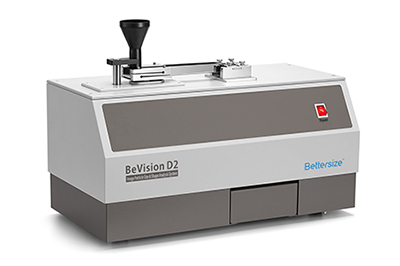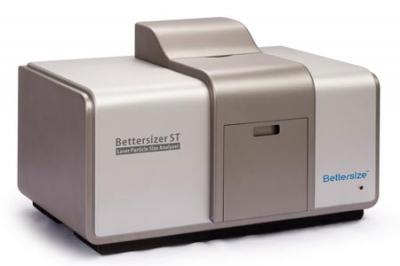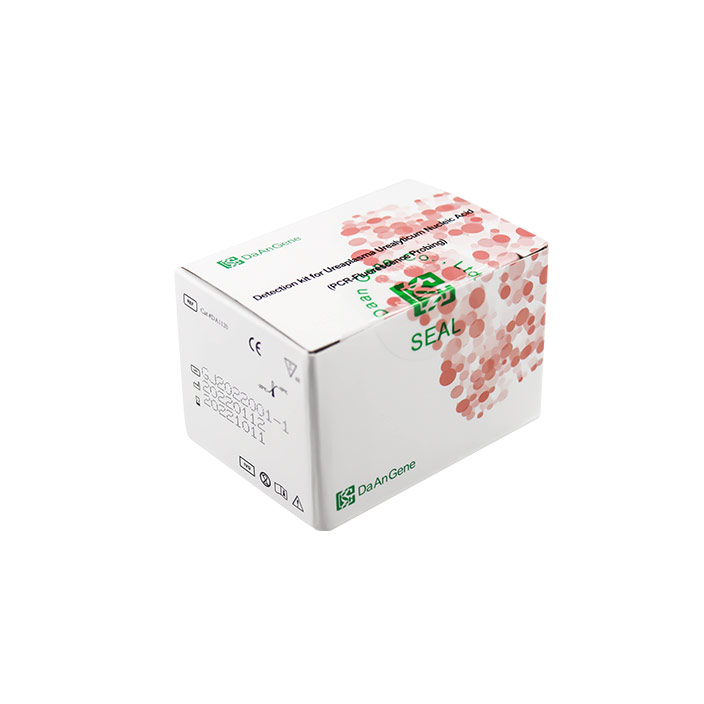Laser Diffraction
Particle size measurement using static light scattering (Particle size determination by laser diffraction)
The particle size distribution as a parameter to specify a powder or dispersion plays a central role in many applications. Examples are construction material (sands, cements), pharmaceuticals, lime stones, ceramics, colored pigments, fertilizers, emulsions and many more. The range of applications is increasing permanently and hence the requirements on the measurement methods regarding size range, measuring time and reproducibility are increasing. Particularly the precise and reproducible detection of particles with sizes close to the measuring range limits as well as the simultaneous determination of particle sizes of very small particles (nanometer range) as well as large particles (lower millimeter range) for the characterization of polymodally or very broadly distributed samples provides a challenge. State-of-the-art laser diffraction particle analyzersuch as the Bettersizer S3 Plus laser grain size analyzer solves these tasks by an innovative design of the optical bench for the detection of backscattered light of very small particles and by detecting large particles by an integrated high-speed CCD camera or the combination of static light scattering and automated imaging.
Measuring method
In static light scattering laser light (monochromatic, coherent light) interacts with the particles, which have to be characterized in terms of particle size. In dependence of the particles' size, the light waves are scattered by the particles in a characteristic manner: the larger the particles are, the greater is the scattering in forward direction. With particles smaller about 100 nm, the scattering intensity is nearly identical in all directions.If you want to know the laser diffraction method and particle size analysis laser diffraction methods, please contact us.
Laser diffraction at particles with different size
The scattering intensity is determined by stationary detectors depending on the angle (light scattering intensity distribution). State-of-the-art laser diffraction systems such as the Bettersizer S3 Plus laser scattering particle size analyzerguarantee the determination of scattering intensities in a continuous angular range of 0.02 – 165°, i. e. in forward, side and backward direction. This is achieved by means of a so-called double lens design and oblique incidence optical system (DLOIOS technology): Fourier lenses (collective lens) are positioned between the laser and particles as well as between particles and detectors. The particles will interact with the light within a parallel laser beam. This offers the advantage that the scattered light can also be detected at very large angles (in backward scattering direction) and thus even very small particles can be measured precisely. Thanks to DLOIOS technology, the problems of conventional measurement setups can also be avoided. Therefore, neither the suitable lenses for the corresponding particle size measurement range have to be selected prior to the measurement (in comparison to the Fourier optics), nor do measurement inaccuracies result from different particle to detector distances, if not all particles lie in one plane (in comparison to the inverse Fourier optics).
schematic-drawing-of-the-innovative-dloios-technique-of-bettersizer-s3
Schematic drawing of the innovative DLOIOS-laser diffraction techniqueof Bettersizer S3 PLUS and CCD-camera system (x0.5 and x10)
To calculate the laser particle sizerdistribution from the measured scattering spectra, the theory of either FRAUNHOFER or MIE is applied. The FRAUNHOFER theory is based on the hypothesis of opaque and spherical particles: the scattered pattern corresponds to a thin opaque two-dimensional plate – diffraction only occurs at the edges. Therefore no additional optical input constants of the material are necessary for this calculation.
In contrast the MIE theory uses the hypothesis of virtually translucent and spherical particles, meaning that the light permeates the matter and is scattered elastically at the atoms of the particle. The knowledge of the complex refractive index of the particles and the liquid as well is necessary. This theory is applicable for particles of all sizes.
The following figure shows an example of a volume-related particle size distribution of a calcium carbonate powder – measured with a Bettersizer S3 Plus.
bettersizer-s3-plus
Determination of Particle Size Using Laserexample
The cumulative throughput curve Q3 (blue) and the resulting histogram (q3, black bar) can be seen.
Literature and norms
ISO 13320 – Particle size analysis – Laser diffraction methods
We provide the best particle measuring servicesand technical support for your using the particle size instrument.
Bettersize has a support team that continually provides improved hardware, software of particle size analyser
and ease of use updates of particle size analyzer instrument to its large customer base. For assistance in any of these aspects contact our global support team or our local distributors.
在线联系供应商
Other supplier products
| Nanoptic 90 Plus | The Nanoptic 90 Plus (nanoparticle sizer) is an optical detection system newly designed to measure the particle size and size distribution of nanop... | |
| HFlow 1 Metal Powder Flowability Tester | Tapped Density Meter BeDensi T series Tapped Density Meter Apparatus includes BeDensi T1 (one cylinder), BeDensi T2 (two cylinders) and BeDensi T3 ... | |
| Bettersizer ST | The Bettersizer ST is an automated laser diffraction laser scattering particle size distribution analyzerdesigned for industrial quality control. I... | |
| Particle Shape | The properties of particles include particle size, shape, surface structure and pore structure. The shape of the particles can impact on many prope... | |
| Products | Bettersize Instruments Ltd, one of the professional particle size analyzer suppliers,offers a wide range of particle size analysis machineto help ... |
Same products
| Ureaplasma Urealyticum Fluorescent Polymerase Chain Reaction Diagnostic Kit | 卖方: Daan Gene Co., Ltd. | Ureaplasma urealyticum is a type of bacteria that can cause infection of the urinary tract and va... | |
| Pathology Test | 卖方: Daan Gene Co., Ltd. | What Is Pathology Diagnosis? Pathology is focusing on the nature, cause, origin, and development... | |
| Low Power SPD | 卖方: Shanghai Chenzhu Instrument Co., Ltd. | The low voltage surge protection deviceis designed to prevent transient surge conditions. T range... | |
| Intrinsic Isolated Barrier | 卖方: Shanghai Chenzhu Instrument Co., Ltd. | Isolated barrier uses intrinsically safe explosion-proof and functional safety technologies and a... | |
| GS8500-EX Series Intrinsic Safety Barrier | 卖方: Shanghai Chenzhu Instrument Co., Ltd. | GS8500-EX range functional safety isolated barriers are CHENZHU's hit products, which obtained th... |









